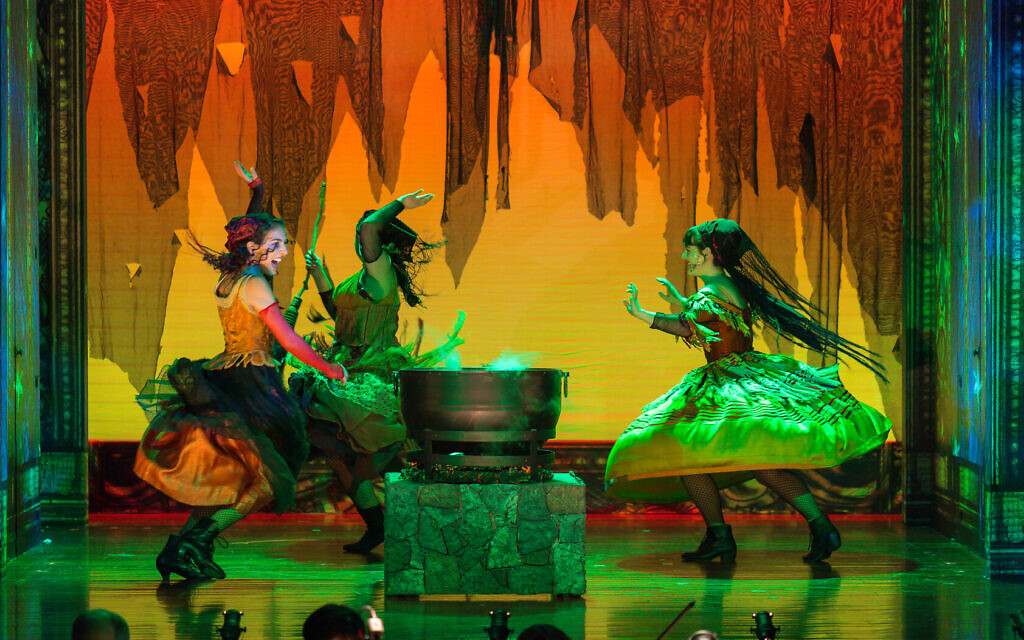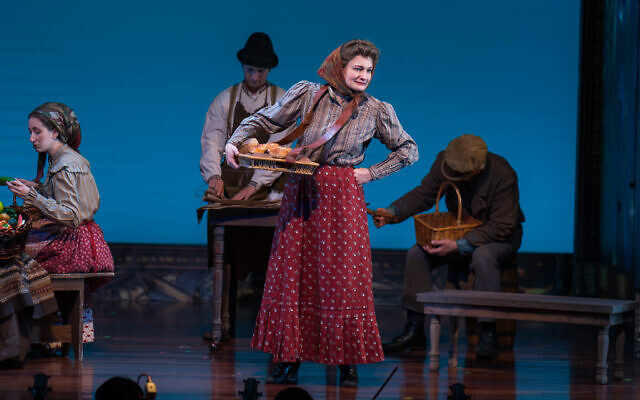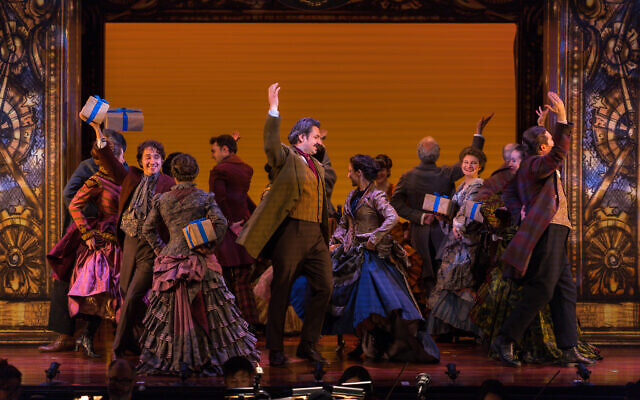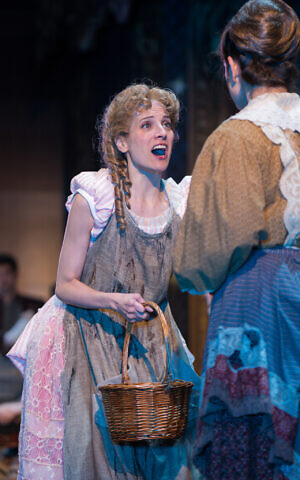It’s a simple tale about good and evil, filled with catchy tunes, dazzling costumes and no shortage of fun schtick

NEW YORK — As the lights dim, the spell is cast. “The Sorceress” is back, and speaking her mother tongue in lower Manhattan. Written by Avrom Goldfaden in 1878, the operetta was the first Yiddish production in America in 1882. This month, New York audiences are experiencing it just as it was 140 years ago — or at least in a close approximation.
Through December 29 at The National Yiddish Theatre Folksbiene (which hangs its hat at the Museum of Jewish Heritage – A Living Memorial to the Holocaust), the classic Yiddish operetta creeps out of the history books and back onto the stage.
It’s a simple tale about good and evil, about community and perseverance. It’s filled with catchy tunes, dazzling costumes and no shortage of schtick. And it’s a whole lot of fun.
The charming fairy tale has been revived many times over the years (and is regularly produced in Hebrew in Israel). But this is the first such large-scale staging in Yiddish in America for 80 years.
How the show got here in the first place is remarkable. A 14-year-old immigrant named Boris Tomashefsky was working in a cigarette factory and heard co-workers humming some lively tunes. When he asked about the songs, they said it was from a show about a young girl whose wicked stepmother uses witchcraft to steal the family fortune and have her abducted. Tomashefsky was so intrigued, he worked to bring a production over from Great Britain. With Jewish immigration exploding in New York, it was perfect timing for a Big Bang of what we now call The Yiddish Theater.

This particular production also has a remarkable provenance. Original materials for the show – sheet music, staging notes and other papers at the point of near-disintegration – were part of the famous Paper Brigade of Vilna’s secret mission to rescue manuscripts from Nazi destruction. An effort led by the NYTF restored these documents that were in the flagship American institute for Yiddish research, the YIVO archive.
The National Yiddish Theatre Folksbiene is coming off its most successful year in recent memory, with their production of “Fiddler on the Roof” leaving the nest and flourishing uptown for the entirety of 2019. (It closes in the first week of January 2020, then will travel the world.) A lot of eyes, therefore, are on them for a follow-up.

“The Sorceress” is not exactly the home run that “Fiddler on the Roof” is, but then again, what is? That was one of the best musicals of all time in a once-in-a-lifetime package. This production is still a winner, not just for the historical aspects mentioned above, but for the energetic and creative way in which it is presented.

The story opens up with the evil title character working on behalf of a devious woman to bring tumult to a happy, wealthy family. (Whether or not she actually has supernatural powers remains ambiguous, but it wouldn’t have been unbelievable to the more provincial audience members of the time.) With the matriarch dead, the usurper finds her way in, and the daughter, Mirele, soon finds herself in misery. A plan is hatched to have her kidnapped and sold into servitude.
The action moves from the upscale Eastern European parlors to a witches’ den to the shtetl marketplace (where there are marvelous songs about food), then on a boat on the Black Sea and finally an exotic coffee house in Istanbul. While the main characters (like the daughter’s heroic fiancée) play this all as straight drama, there’s a counterbalance of humor, oftentimes coming from the local street peddler who seems to always pop up when things get too heavy.
Despite the show taking place adjacent to a museum, this isn’t exactly high art. It was popular entertainment of its day. Since the plot mechanics don’t occupy too much of your mental capacity, you can focus on the language (oh, so that word means “bird,” eh?), the music, the performances and the sets. There are English and Russian supertitles projected above the “gypsy caravan”-like proscenium.

Without giving too much away about the plot, the show’s director, Motl Didner (who is also associate artistic director of NYTF), notes how this is a uniquely Jewish fairy tale, with the villains getting their comeuppance by their own deeds.
“In the non-Jewish world,” Didner told me during a chat after the show, “Hansel and Gretel shove the witch into the oven at the end. The Huntsman cuts open the wolf and releases Red Riding Hood. In the Jewish world it’s not the heroes who have to lower themselves to violence in order to prevail.” He cites Haman hanging himself and Pharaoh initiating the worst plague by calling for Hebrew first-borns to be slaughtered.
It’s an interesting point, and proof that any rich text can be scrutinized for deeper meaning. Especially one that has stood the test of time.
“The Sorceress” runs through December 29 at the National Yiddish Theatre Folksbiene. Tickets are available at the website.
As reported by The Times of Israel
